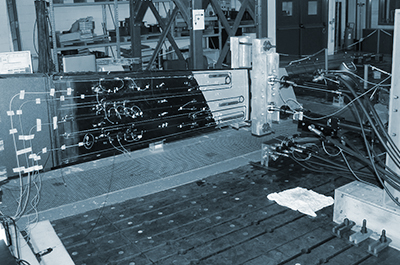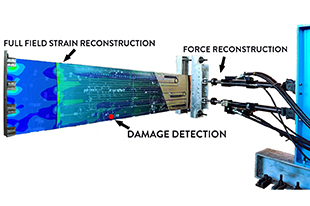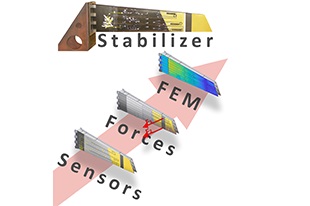
On June the 23rd a demonstration event of the project SAMAS has been successfully held in remote in the DMECC lab.
SAMAS project - SHM application to Remotely Piloted Aircraft Systems (2017-2020), is a three-year EDA (European Defence Agency) Cat.B Project focused on diagnosis and prognosis of composite structures subject to aerodynamic loads and overloads due to low/high velocity impacts.
SAMAS consortium, leaded by Prof. Marco Giglio of MeccPolimi includes industries (Leonardo S.p.A. - IT), universities (POLIMI-DMECC - IT), research centres (Air Force Institute of Tecnology - PL) and aircraft maintenance centers (Military Air Works 1 - PL) from two nations, Italy and Poland. The consortium combines the heterogeneous and complementary partner expertise in the fields of numerical analysis, SHM system application, sensor network design and installation, aeronautical industrial applications, with the end-user experience in the military field, thus constituting a robust background for the project target fulfilment. Aim of SAMAS is that of increasing the Technology Readiness Level (TRL) of existing Structural Health and Load Monitoring (SHLM) system, demonstrating the performance of the developed systems in realistic operative scenarios, including flight tests. The main innovative aspect of the methodology pursued in SAMAS is the coupling of model information and signals from sensors for the robust interpretation of sensor readings. In the final part of the project, SAMAS project is mainly characterized by experimental activities aimed to validate the proposed method. The demonstration event allowed to verify the capability of an actual subsystem in laboratory environment very close to an actual one.
A sensorised (active and passive sensors) wingbox portion of a Remotely Piloted Aircraft System, Figure 1, has been used for:
Load monitoring: A user interface showing in real-time the amount of force that is transmitted by two actuators, Figure 2;
Passive impact monitoring: A user interface was created, showing in real time detection and localization of impact damage. The structure has been impacted by means of an airgun;
Active impact event localization: A second user interface was used to process in quasi-real-time the data previously collected for active damage verification, then showing heatmaps for impact event localization.
Results from SAMAS project are of actual interest for allowing a growing of the usage of Remotely Piloted Aircraft Systems (RPAS) beyond line of sight in the non-segregated airspace. The absence of an on-board pilot poses some new challenges in the identification of several damaging events (bird strike, lightning strike, battle damage and damage during taxi or landing) that in general are assessed by the pilot in a manned aircraft. The development of a reliable Structural Health and Load Monitoring system is a mandatory step to guarantee the efficient and safe RPAS operation. Results of SAMAS project will be of benefit for RPAS, also in civil market. The enhanced knowledge of the current and actual state of the system structure will allow to detect potentially dangerous discrete events and, at the same time, relaxes the need of scheduled inspections (for service loads), moving towards the condition-based maintenance of the system thus drastically reducing the maintenance costs.
MeccPolimi team includes: Prof. Marco Giglio (Coordinator), Prof. Claudio Sbarufatti (Scientific Manager), Dr. Alessio Beligni (Impact monitoring), Luca Colombo (Load monitoring), Prof. Andrea Manes (Material Calibration and Impact Simulations), Ettore Nardi, Álvaro González Jiménez.



